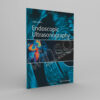Microbiology for Surgical Infections: Diagnosis, Prognosis and Treatment
Shipping: Delivery 2 To 3 Working Days
Returns: 7 Days Easy Return
Dive into the intricate world of microbiology for surgical infections, uncovering its role in diagnosis, prognosis, and treatment. This comprehensive guide navigates through essential microbiological insights crucial for managing surgical infections effectively.
Microbiology for Surgical Infections: Diagnosis, Prognosis and Treatment
by Kateryna Kon, Mahendra Rai
Microbiology for Surgical Infections: Diagnosis, Prognosis and Treatment explores current trends in etiology and antibiotic resistance of pathogens responsible for devastating and complex surgical infections. Clinicians and researchers report the most recent advances in diagnostic approaches to bacterial and non-bacterial surgical infections, including invasive fungal infections. Current guidelines for prophylaxis of community-acquired and nosocomial infections, complications in surgery, and improvement of diagnosis and treatment of these devastating surgical infections are also discussed.
The work gives specific attention to intra-abdominal and wound infections, as well as infections in cardiac surgery and neurosurgery. Taken together, these explorations inform the work of specialists in different surgical arenas, as well as those working in microbiology.
Microbiology for Surgical Infections provides a resource to those working to improve outcomes in this complicated arena by discussing prospects for future study and identifying targets for future research.
- Provides a multi-dimensional view of myriad topics pertinent to surgical infections, including questions of etiology, pathogenesis, host-microbial interactions, diagnosis, prognosis, treatment and prophylaxis
- Delivers cutting-edge commentary from eminent surgeons, microbiologists, and infectious disease specialists, with global contributions from both the developed and developing worlds
- Presents comprehensive research informed by the most recent technological and scientific advances in the field














